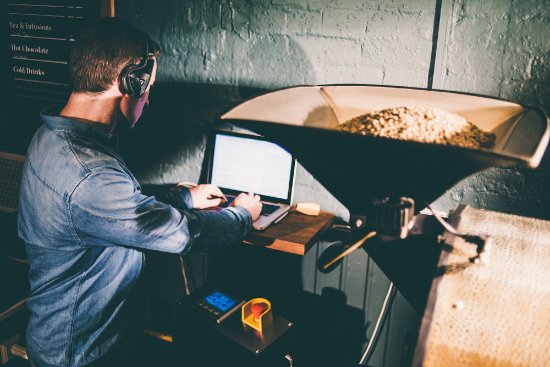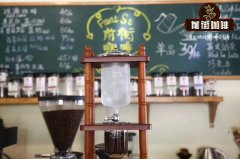Professional coffee roasting | Coffee roasting steps that cannot be ignored-preheating vs cooling

Professional coffee knowledge exchange more coffee bean information please follow the coffee workshop (Wechat official account cafe_style)
Preheating and cooling, one hot and one cold, seem to be poles, but they are small but important steps in the process of roasting coffee. One of them is the initial process of baking, one is the final act of baking, one is to set the tone of the temperature before the beans are put into the oven, and the other is to instantly change the temperature to retain the flavor of the coffee. It sounds amazing. Let's take a look at the importance of both.

The moment before the raw bean enters the roaster: preheating and furnace temperature setting
When preparing for coffee roasting, we measure the weight of the raw beans that need to be roasted, and then pour them into the funnel on the fuselage. Although they are ready to bake, sometimes they may have to wait a little longer in the ditch. What is the reason for this?
This is because the roaster needs to preheat the coffee before it is roasted. We set the temperature to which we want to preheat, and then go to the appropriate furnace temperature before the raw beans can be put into the oven. This principle is like fried steak, we rarely put a piece of fried steak on a cold pan; bake the cake in the oven, the preheated oven can make the cake more uniform and expand better. Coffee roasting and cooking have similar principles: they both need a program to preheat tools.

According to the different characteristics of raw coffee beans, the temperature of the oven is set according to the weather, humidity, the amount of coffee to be roasted, the order of roasting and so on. One of the benefits of this preheating program is to help coffee beans develop their potential flavor during roasting. Preheat the beans before entering the furnace and set the furnace temperature, which sets the tone for baking; and the furnace temperature directly affects the temperature recovery point of raw beans, the rate of temperature rise, whether the dehydration time is sufficient or not, and even whether the heat absorption capacity of beans can be exploded at an appropriate time. When coffee beans explode, the flavor develops most intensely. In this way, whether the baker can give full play to the characteristics of raw beans, the furnace temperature setting has become the key.

Critical time for bean production: cooling procedure
Coffee is also easily affected by temperature, whether it is in the state of raw beans, roasting or cooked beans that have been baked. The physical and chemical effects of roasted coffee beans are affected by temperature, thus changing the development of flavor. Do not think that beans will be roasted as soon as they come out of the oven. In fact, a slight error in a program after beans is enough to destroy the mind of coffee roasting.
Cooling down is the last but very important step in coffee roasting. When coffee beans come out of the oven, the temperature can reach 210 degrees Celsius or above. If the cooling process is fast enough, the flavor that the baker strives to retain can be locked and preserved; but if the cooling process is not fast enough, the coffee beans can continue to bake with their own heat in the cooling tray, which has the opportunity to destroy the aromatic substances of the coffee beans, resulting in the loss of the flavor they want to retain, or even the smell of wheat or rye bread. These are the smells that bakers should avoid.

There are generally two ways of cooling: air cooling and water cooling. Coffee roasting Asian beans are all air-cooled. Take our coffee roaster as an example, except for the bean oven, there will be a tray and a rotatable Mixer. When the baking is finished and the beans are ready to go out, the baker will first press the button to start the moving arm and the fan (Cooler) hidden at the bottom of the tray, while when the beans come out, the baker will turn on the stove, and the fragrant coffee beans will fall into the tray and cool with the cold air and the moving arm.
The cooling process is usually completed in 4 minutes or less. After the cooling process is completed, the coffee beans can not be exposed to the air all the time and need to be packed in sealed containers or bags immediately in order to prepare the bean maintenance procedure and maintain freshness.
Important Notice :
前街咖啡 FrontStreet Coffee has moved to new addredd:
FrontStreet Coffee Address: 315,Donghua East Road,GuangZhou
Tel:020 38364473
- Prev

Four methods of making upgraded iced coffee. As a southerner, you must learn it.
Professional coffee knowledge exchange more coffee bean information please follow the coffee workshop (Wechat official account cafe_style) A few days ago, fans asked the editor BingDi how to do? As a southerner's editor: your family does not know how to make ice drops, awesome my brother! It seems that northerners do have the need to make iced coffee. Ha [ice drop] Coffee making steps:\ 1 / Grinding thickness
- Next

Ice Water hand Coffee Teaching Video and Operation demonstration subvert your opponent's fixed impression of making coffee
Professional coffee knowledge exchange more coffee bean information please follow the Coffee Workshop (Wechat official account cafe_style) 2018 World Barista Competition China final has just concluded, there will be a big wave of friends who are acquaintances, but have you seen the wonderful competition performance of the contestants, do you have a little excitement and yearning? As a coffee lover,
Related
- Beginners will see the "Coffee pull flower" guide!
- What is the difference between ice blog purified milk and ordinary milk coffee?
- Why is the Philippines the largest producer of crops in Liberia?
- For coffee extraction, should the fine powder be retained?
- How does extracted espresso fill pressed powder? How much strength does it take to press the powder?
- How to make jasmine cold extract coffee? Is the jasmine + latte good?
- Will this little toy really make the coffee taste better? How does Lily Drip affect coffee extraction?
- Will the action of slapping the filter cup also affect coffee extraction?
- What's the difference between powder-to-water ratio and powder-to-liquid ratio?
- What is the Ethiopian local species? What does it have to do with Heirloom native species?

